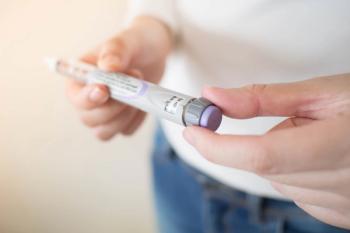
- Total Pharmacy® June 2025
- Volume 03
- Issue 03
At-Home Testing Offers Unique Opportunities for Community Pharmacies
At the Total Pharmacy Solutions Summit Spring 2025 event, diagnostics experts Jenna Anderson and Amanda Wiley explored community pharmacists’ role in at-home testing.
For Jenna Anderson and Amanda Wiley, at-home diagnostic testing products are revolutionizing their clients’ bottom lines. For community pharmacists, at-home testing is a significant opportunity to boost OTC sales, the duo explained at the Total Pharmacy Solutions Summit Spring 2025.
“All of us experienced [the COVID-19 pandemic], and in many ways, it changed how consumers receive health care, how they view health care, and how they interact with their primary care physicians, as well as the pharmacy,” said Anderson, CEO of KiHealth, a company that specializes in diagnostic tests. “The post-COVID[-19] era, which is what many in my discipline speak to, has really shifted how health care is consumed. Sixty-one percent of Americans report that they now make healthier decisions, that they’re focusing more on prevention. Seventy-six percent of Americans are interested in at-home testing. They want the convenience. They now feel comfortable with the quality of the products.”
Anderson was joined by Wiley, marketing manager at HealthSource Marketing, a company that specializes in OTC sales and marketing of diagnostic tests. They collaborated at the most recent Solutions Summit to discuss the increase in demand for at-home testing in a post-COVID[-19] health care landscape.
READ MORE:
Read on for some key takeaways from their presentation:
- Anderson and Wiley began by discussing consumers’ increasing demand for convenience and accessibility. “We’re definitely in the era of a short attention span. We want everything at our fingertips,” said Anderson. “Consumers now, over 50% of them, consider pharmacies as a primary health care destination. Telehealth visits are up 38 times higher than they were [in the] prepandemic [era].”
- They explored gaps within the health care industry and how pharmacists can help address primary care physician shortages, patient access challenges, and more. “The pharmacies are well-positioned to fill this major gap that currently exists,” Anderson said. “With the increased opportunities for chronic disease screening, for lifestyle counseling, and for medical therapy management, this is an area where pharmacies can really step into becoming that health hub for the communities, and many already are.”
- Anderson and Wiley cited the current digital health revolution to explain the unmet need for at-home testing and other revenue-increasing opportunities. Anderson discussed a report that 80% of patients are seeking digital tools to assist their health care journeys. With this digital revolution, preventive care, according to the presentation, has the potential to be a standard approach to optimizing health in the near future.
- Wiley discussed at-home diagnostic testing and how it has improved. “A lot of people are interested in at-home testing. I think there’s a great place that we can play a role, and the pharmacy can play a role, in helping them to take that next step and perform the tests,” said Wiley. She touched on patient education and the role community pharmacists play.
- Wiley cited the Reese ColoTest as an example of how at-home testing has improved. “If someone doesn’t have insurance coverage, is having a hard time getting in for a colonoscopy, is uncomfortable with the idea of the procedure, [is too old for a] colonoscopy, there are other options for them, including stool DNA tests like Cologuard that can be performed every 3 years, or FIT [fecal immunochemical tests] like Reese’s ColoTest, which is an annual stool screening test. You do this once a year. There’s no prep needed. You can do it right at home. And what’s great is these are fairly inexpensive tests.”
- With such industry-changing technologies at pharmacies’ fingertips, the opportunities for transforming practice into a community health hub are only increasing. As more attention is given to chronic disease detection and prevention, pharmacies will have opportunities for expanding their reach. “Everybody knows early detection can change lives,” said Anderson. “I often say the only way you cure disease is to prevent it in the first place. It’s crucial.”
Visit
To read these stories and more,
Articles in this issue
6 months ago
How to Make the Pharmacy a Community Health HubNewsletter
Pharmacy practice is always changing. Stay ahead of the curve with the Drug Topics newsletter and get the latest drug information, industry trends, and patient care tips.























































































































